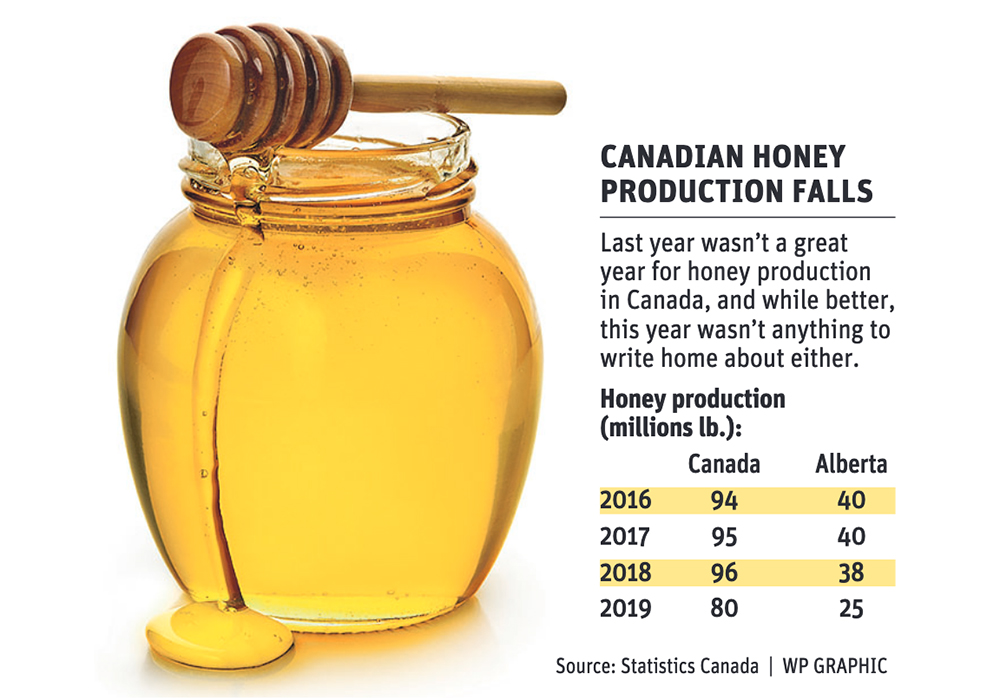For Ryan Hicks, 2019 was his worst year ever for honey production in northern Alberta.
This summer was better, but it wasn’t great.
His honey output was about 30 percent lower than normal thanks to cool and rainy weather.
“We had such a wet June and July, we were really 10 days late starting our honey production,” said Hicks, a beekeeper from McLennan, in Alberta’s Peace River region.
“We need (23-24 C) for the bees to maximize their production and we didn’t get very much of it (warm weather).”
Read Also

Critical growing season is ahead for soybeans
What the weather turns out to be in the United States is going to have a significant impact on Canadian producers’ prices
Hicks, a director with the Alberta Beekeepers Commission, hasn’t spoken to honey producers in every part of the province, but many beekeepers are sharing a similar story — honey yields are well below average.
“In central Alberta and eastern Alberta, everything is going to be down.”
Production may be slightly better in Saskatchewan, but honey yields are probably below the provincial average of 200 pounds per hive.
“I would guesstimate 15 to 20 percent off the normal crop,” said Jake Berg, a beekeeper from Melfort, Sask.
Bees got off to a slow start, thanks to chilly temperatures in April and May. Then, it was cool and rainy during the first part of the canola bloom.
The weather was less than ideal, but a lack of labour also cut into production.
In March and April, many beekeepers struggled to get temporary foreign workers to their farms because of COVID-19 restrictions. Workers who did arrive in the country had to quarantine for two weeks.
Berg managed to get five out of six workers to his operation but the challenges with labour likely cut into honey production across the Prairies.
“A bit of labour shortage in the spring can make a huge difference (for a beekeeper),” Berg said.
In Manitoba, some beekeepers had better luck in the summer of 2020.
Honey yields will likely be close to the provincial average, of 160-165 lb. per hive.
“I would say we’re about average,” said Mark Friesen of Morden, chair of the Manitoba Beekeepers Association. “A decent year. Nothing to go bragging about. Or to go complaining about.”
Alberta has more bee colonies than Manitoba and Saskatchewan combined, so a drop in Alberta means less honey on the Prairies and in Canada.
In 2019, Canada produced 80 million lb. of honey, down 15 million from 2017 and 2018.
Cool temperatures slowed bee activity in the Peace country and in other parts of Alberta last year. In other regions of the Prairies, drought hindered flower blooms and bee productivity.
Honey production this year should be up from 2019. As well, honey packers are struggling to find supplies, so prices have climbed close to $2 per lb.
“For the last five years, it’s been anywhere from a $1.35 to $1.65 (per lb.),” Hicks said.
“We’re starting to see the price of honey hover around $2.”


















